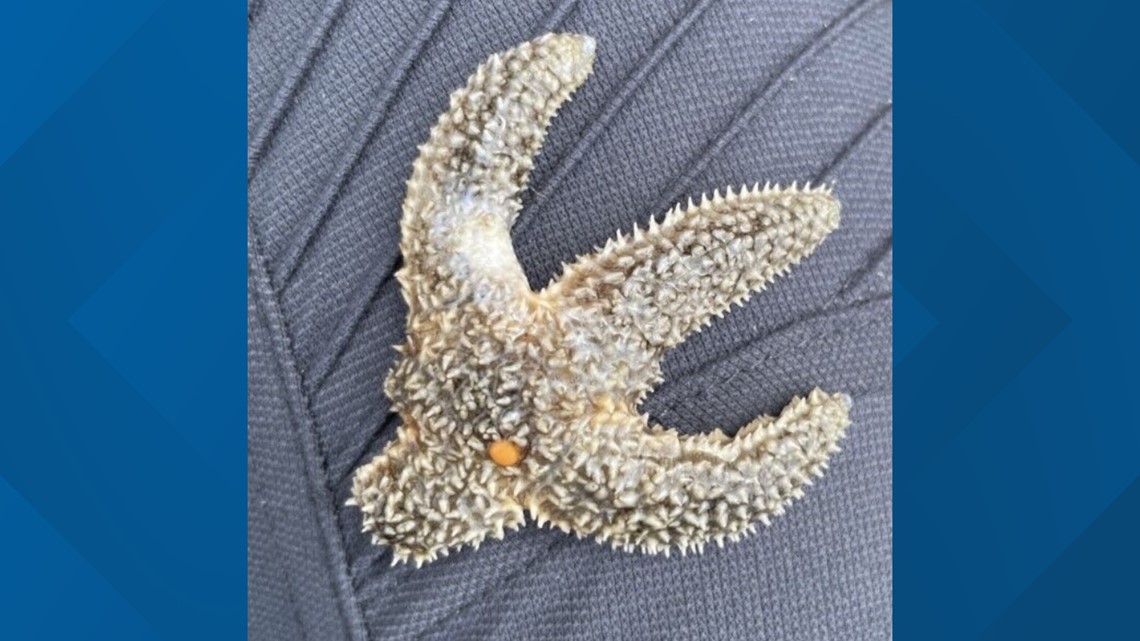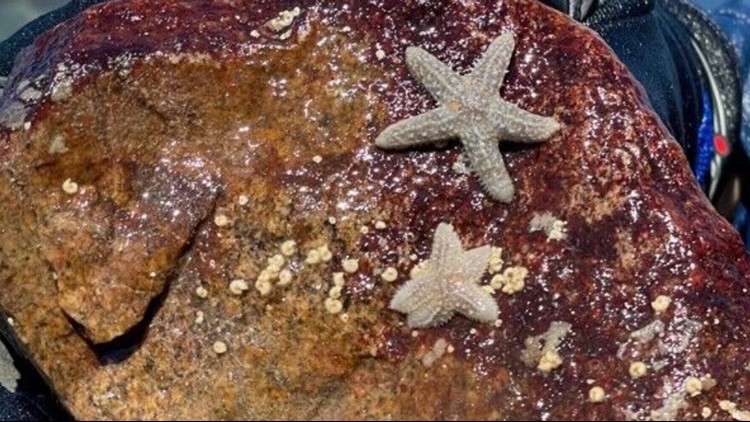MAINE, USA — Turns out we’ve been looking at starfish all wrong.
First, they’re not fish. They belong to a group of marine invertebrates called echinoderms, which also includes sea urchins, sand dollars and sea cucumbers. Starfish now go by the classy common name of sea stars.
Then there’s the matter of those arms. It’s true, sea stars can regrow, or regenerate, if an arm should be torn off by, say, the sharp bill of a hungry sea gull. But recent studies show those arms are actually heads. So instead of a body with five arms, sea stars have only heads.
Something else about sea stars has confounded scientists: What is killing them?
“All marine life is struggling to adapt at the speed of climate change,” said Andrew McCracken, a Topsham native and Ph.D. student at the University of Vermont. “The Gulf of Maine, which is warming faster than other ocean waters, is an area of particular risk.”
Besides waters that are warming and becoming more acidic, possible stressors include low oxygen levels (due to increases in bacteria in the water using up the oxygen), and perhaps a virus.
Whatever the cause, what happens to sick sea stars is fodder for a horror flick. A white, gooey lesion on its spiny skin soon spreads, causing the tissue to soften and twist. Within days the sea star can completely disintegrate — a sickness called sea star wasting disease (SSWD).
SSWD traces back to at least the 1970s, when a disease with similar symptoms was first observed and documented in Maine and elsewhere in the East, said McCracken, who is studying how marine animals adapt to stress.
Then in 2013, large-scale die-offs began on the Pacific Coast from Mexico to Alaska. On the East Coast, with fewer sea star species and smaller populations, the die-offs haven’t been as dramatic.
But it’s happening regularly from Acadia National Park in the north to at least Massachusetts in the south, said Dr. Melina Giakoumis, the associate director of the Institute for Comparative Genomics at the American Museum of Natural History. And, she adds, it seems to be happening more frequently and more severely.
Maine’s two common sea star species, the Forbes sea star (Asterias forbesi) and the northern sea star (Asterias rubens), have both been listed as “Species of Greatest Conservation Need” by the state. The 2016 listing claims sea stars are “undergoing steep population declines,” which, if unchecked, likely will lead to “local extinction and/or range contraction.”
“Since sea stars aren’t a commercial species, DMR (Maine’s Department of Marine Resources) devotes its limited resources to monitoring work versus population mitigation,” wrote Jeff Nichols, a senior DMR staffer, in an email.


Yet Maine’s sea stars are considered keystone species, meaning “they have a disproportionately large effect on their community,” said Giakoumis. “It’s important to protect them because they help keep other species in check, which increases stability and resilience in the entire ecosystem.”
The sea stars may already be helping themselves survive SSWD.
Giakoumis has documented that the hybridization of Maine’s two major sea star species is occurring from the southern Canadian Maritimes to New England.
“This adaptation perhaps provides genetic variation the species need to survive,” said Giakoumis.
McCracken also wants to know if and how the sea stars might adapt and survive. Last spring he was awarded a three-year National Science Foundation Graduate Research Fellowship to study how thermal extremes impact physiological changes in echinoderms, work that has specific relevance for the Gulf of Maine.
“By the time it takes to unravel the possible multiple causes of SSWD, it may be too late,” said McCracken. “Working to protect the surviving populations is something I’m excited about. Are there actual traits that make them immune? Do they have the genetic capacity to adapt? These are the questions I hope to help answer.”
Getting the answers will take help from the community.
That’s why Giakoumis is working on an app that will allow citizen scientists and trained scientists to plug in data on when and where they see sea stars, and if they observe evidence of SSWD.
“Sea stars tend to be more visible in the summer when they come into shallower waters,” said Giakoumis. “In winter months they tend to stay in deeper water.”
The work by Giakoumis and McCracken will help us better understand SSWD and hopefully help scientists lessen future population declines. But we can help sea stars and all marine life now by “protecting what we can control,” said McCracken.
“By not overfishing and not raking the sea floor, we will protect marine habitat, and give sea stars and other marine life the best chance of survival.”
This story was originally published by The Maine Monitor, a nonprofit and nonpartisan news organization. To get regular coverage from the Monitor, sign up for a free Monitor newsletter here.



